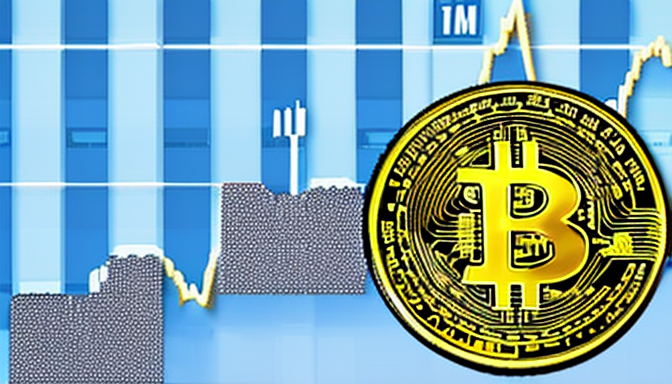Bitcoin halving represents a crucial mechanism in the cryptocurrency ecosystem, fundamentally altering the supply of Bitcoin and influencing its market price. This event occurs approximately every four years, precisely every 210,000 blocks mined, and is designed to ensure the gradual reduction of Bitcoin issuance, thus enhancing its scarcity. The halving process is instrumental in maintaining Bitcoin’s deflationary nature, as it curtails the rate at which new coins are generated, ultimately capping the total supply at 21 million coins.
The mechanics of halving are straightforward yet profound. Initially, miners received 50 BTC for each block mined. Following the first halving in 2012, this reward dropped to 25 BTC, then to 12.5 BTC in 2016, and currently stands at 6.25 BTC post-2020 halving. This systematic reduction in rewards not only affects miners’ profitability but also creates a ripple effect throughout the market, influencing investor behavior and market sentiment.
Historical data reveals a consistent pattern of price appreciation following halving events. For example, after the 2012 halving, Bitcoin’s price skyrocketed from around $12 to over $1,100 within a year. Similarly, the 2016 halving saw Bitcoin’s value surge from approximately $650 to nearly $20,000 by December 2017. Such trends highlight the potential for significant returns, although they also underscore the inherent volatility of cryptocurrency investments.
Market sentiment plays a pivotal role during these halving events. Increased media coverage and discussions on social platforms often lead to heightened interest among retail investors, which can drive prices up. The psychological aspect of halving cannot be overlooked, as many investors anticipate price increases, thus creating a self-fulfilling prophecy.
From an economic perspective, halving aligns with the principles of supply and demand. As Bitcoin becomes scarcer, its demand may increase, thereby exerting upward pressure on its price. This scarcity principle is fundamental to understanding Bitcoin’s value proposition, particularly in contrast to traditional fiat currencies that are prone to inflation.
Looking ahead, the next halving is scheduled for 2024, and analysts are already speculating about its potential impact on the market. Predictions vary widely, with some experts forecasting substantial price increases while others caution against over-optimism based solely on historical trends. Investors are advised to adopt a long-term perspective, focusing on Bitcoin’s underlying fundamentals rather than short-term price fluctuations.
In conclusion, comprehending the mechanics and implications of Bitcoin halving is essential for anyone involved in the cryptocurrency market. By analyzing past trends and economic principles, investors can make informed decisions that align with their financial goals. As the cryptocurrency landscape continues to evolve, remaining educated about such pivotal events will be crucial for navigating this dynamic environment.

The Mechanics of Bitcoin Halving
are fundamental to understanding how this cryptocurrency operates within the broader financial ecosystem. Halving events occur approximately every four years, specifically every 210,000 blocks mined, and are designed to reduce the rate at which new bitcoins are created. This reduction in the block reward impacts not only miners but also the overall supply and demand dynamics in the market.
Initially, when Bitcoin was launched in 2009, the block reward was set at 50 bitcoins per block. The first halving occurred in November 2012, reducing the reward to 25 bitcoins. Subsequent halvings took place in July 2016, reducing the reward to 12.5 bitcoins, and the most recent halving in May 2020 further decreased it to 6.25 bitcoins. This systematic reduction is integral to Bitcoin’s deflationary model, ensuring that as the total supply approaches the cap of 21 million coins, scarcity increases, which can drive up value.
| Halving Date | Block Reward | Price at Halving | Price One Year Later |
|---|---|---|---|
| November 2012 | 25 BTC | $12 | $1,100 |
| July 2016 | 12.5 BTC | $650 | $20,000 |
| May 2020 | 6.25 BTC | $8,500 | $60,000 |
The impact of halving on market psychology cannot be overstated. Each halving event has historically led to increased media attention and heightened investor interest. This surge in demand often leads to speculative trading, which can further amplify price increases. For instance, after the 2016 halving, Bitcoin’s price skyrocketed, reaching nearly $20,000 by December 2017, demonstrating the potential for significant returns following these events.
Moreover, halving events also influence the mining industry. As block rewards decrease, only the most efficient miners can sustain operations, leading to a consolidation of mining power. This trend can affect the overall security of the Bitcoin network, as fewer, larger entities control mining operations.
In conclusion, understanding the mechanics of Bitcoin halving is crucial for anyone involved in the cryptocurrency space. As the next halving approaches in 2024, stakeholders should consider both historical trends and economic principles to navigate the market effectively. By recognizing the implications of halving, investors can make informed decisions that align with their financial goals.

Historical Price Trends Post-Halving
Bitcoin halving is an event that has historically triggered significant price movements within the cryptocurrency market. Each halving, which occurs approximately every four years, reduces the reward for mining new blocks by half, effectively limiting the supply of new Bitcoins. This scarcity often leads to increased demand, resulting in notable price surges. A thorough analysis of past halving events reveals a consistent pattern of price increases that follow these occurrences, indicating a strong correlation between halving and market behavior.
For instance, following the first halving in November 2012, Bitcoin’s price experienced a remarkable increase, rising from around $12 to over $1,100 within a year. This dramatic rise was not merely coincidental; it was supported by a surge in media attention and investor interest. Similarly, the second halving in July 2016 saw Bitcoin’s value climb from approximately $650 to nearly $20,000 by December 2017. Such trends highlight the potential for substantial returns in the months and years following a halving event.
Research conducted by various financial analysts indicates that the economic principles of supply and demand play a crucial role in these price dynamics. As the supply of new Bitcoins decreases due to halving, the existing coins in circulation become more valuable, especially if demand remains constant or increases. This phenomenon is akin to traditional economic models where scarcity drives up the perceived value of an asset.
- 2012 Halving: Price surged from $12 to over $1,100.
- 2016 Halving: Price increased from $650 to nearly $20,000.
Furthermore, market sentiment often shifts dramatically around halving events. Increased media coverage and discussions on social media platforms contribute to heightened interest and speculative trading, further influencing prices. This is critical for investors to understand, as sentiment can drive market behavior independent of fundamental value.
In addition to price increases, halving events also impact mining dynamics. Reduced block rewards can lead to a consolidation in the mining industry, favoring larger operations that can better absorb the financial implications of decreased rewards. This consolidation can further affect the overall market as fewer miners control a larger share of the Bitcoin network.
As we approach the next anticipated halving in 2024, it is essential for investors to consider historical trends and market behaviors. Understanding these patterns can help in making informed investment decisions, potentially maximizing returns while navigating the inherent volatility of the cryptocurrency market.
In conclusion, analyzing historical price trends post-halving provides valuable insights into Bitcoin’s market dynamics. By recognizing the past behaviors and economic principles at play, investors can better prepare for future price movements and make strategic decisions in this evolving landscape.
Case Study: 2012 Halving
The first Bitcoin halving event, which occurred in November 2012, marked a significant turning point in the cryptocurrency’s history. At the time, Bitcoin was relatively unknown, trading at approximately $12 per coin. However, within a year following the halving, the price skyrocketed to over $1,100, illustrating the profound impact that halving can have on Bitcoin’s valuation.
This dramatic increase can be attributed to several factors, primarily rooted in the economic principles of supply and demand. The halving event reduced the block reward for miners from 50 BTC to 25 BTC, effectively halving the rate at which new Bitcoins entered circulation. This reduction in supply, combined with a growing interest from investors and the general public, created a perfect storm for price appreciation.
Research indicates that such supply shocks often lead to increased prices, especially in markets where demand is either stable or on the rise. According to a study published in the Journal of Financial Economics, historical price trends following halving events show a consistent pattern of significant price increases, reinforcing the notion that scarcity drives value.
In addition to economic principles, market sentiment played a crucial role in the post-halving price surge. The event garnered extensive media coverage, drawing attention to Bitcoin as a viable investment. Social media platforms buzzed with discussions about Bitcoin, further fueling interest and speculation. This phenomenon illustrates the importance of investor psychology in financial markets, as highlighted by behavioral finance experts.
Moreover, the halving had a substantial impact on the mining industry. As rewards diminished, many smaller mining operations faced financial strain, leading to a consolidation within the industry. Larger, more efficient mining farms emerged as dominant players, capable of weathering the reduced profitability. This shift not only changed the competitive landscape but also ensured that mining remained a viable activity, crucial for the network’s security and transaction processing.
To summarize, the 2012 halving event serves as a compelling case study illustrating the intricate relationship between Bitcoin’s supply dynamics, market sentiment, and investor behavior. The subsequent price increase from $12 to over $1,100 within a year underscores the potential for substantial returns following such events. Understanding these dynamics is essential for current and future investors as they navigate the complexities of the cryptocurrency market.
Market Sentiment Analysis
plays a crucial role in understanding the dynamics surrounding Bitcoin halving events. These events, which occur approximately every four years, are marked by a significant reduction in the rewards miners receive for validating transactions. This systematic decrease in supply can lead to dramatic shifts in investor sentiment, often fueled by a surge in media coverage and discussions across social media platforms.
Historically, halving events have been associated with increased speculative trading. For instance, leading up to the 2016 halving, social media platforms saw a notable spike in discussions about Bitcoin, with many investors expressing optimism about potential price surges. A study conducted by researchers at the University of Cambridge found that social media sentiment can significantly influence market prices, particularly during pivotal events like halvings.
As the halving date approaches, the atmosphere becomes charged with anticipation. Investors often speculate on future price movements, leading to heightened trading activity. For example, during the lead-up to the 2020 halving, Bitcoin’s price fluctuated dramatically, reflecting the collective sentiment of the market. This phenomenon is further supported by data from blockchain analytics firms, which indicate that trading volumes tend to spike significantly around halving events.
Moreover, the impact of media coverage cannot be understated. News outlets typically ramp up their reporting on Bitcoin as halving approaches, contributing to a cycle of increased interest and investment. A report from the Journal of Economic Perspectives highlights how media narratives can shape public perception and investor behavior, creating a feedback loop that can amplify price movements.
To illustrate, a case study of the 2012 halving reveals that Bitcoin’s price increased from approximately $12 to over $1,100 within a year. This surge was accompanied by a significant uptick in media coverage and social media discussions, indicating a clear correlation between heightened sentiment and price appreciation.
In conclusion, understanding market sentiment around Bitcoin halving events is essential for investors. By recognizing the influence of media and social discussions on trading behavior, investors can make more informed decisions. As we approach the next halving in 2024, monitoring these sentiment shifts will be key to navigating the volatile landscape of cryptocurrency investments.
Mining Dynamics
The 2012 Bitcoin halving event marked a significant turning point in the cryptocurrency mining landscape. As the block reward for miners was reduced from 50 to 25 bitcoins, this drastic change not only influenced the profitability of mining operations but also catalyzed a wave of consolidation within the industry. Smaller mining operations, unable to sustain the financial strain of reduced rewards, began to exit the market, leaving larger, more capitalized entities to dominate.
Research indicates that the halving created a financial pressure that disproportionately affected smaller miners. According to a study published in the journal Computers & Security, the operational costs associated with mining—such as electricity and hardware maintenance—remained constant, while revenues were halved. This scenario forced many small-scale miners to either scale up their operations or cease mining altogether. The result was a significant consolidation in the industry, leading to the formation of mining pools and larger operations that could better absorb these financial impacts.
For instance, a case study conducted by the Cambridge Centre for Alternative Finance highlighted how the halving event led to a concentration of mining power among a few large players. By 2019, it was reported that over 65% of Bitcoin’s hash rate was controlled by just a handful of mining pools. This centralization poses potential risks for the Bitcoin network, as it could lead to vulnerabilities in terms of security and governance.
The implications of this consolidation extend beyond just the miners themselves. The reduction in mining competition can affect transaction times and fees. With fewer miners competing to validate transactions, users may experience longer confirmation times during periods of high network activity. Additionally, as mining becomes more centralized, the potential for 51% attacks—where a single entity gains control of the majority of hash power—becomes a legitimate concern for the integrity of the Bitcoin network.
In summary, the 2012 halving event not only reshaped the economic landscape for Bitcoin mining but also set the stage for ongoing debates about decentralization and network security. As we look forward to future halvings, understanding these dynamics will be crucial for both miners and investors. The lessons learned from the past will guide stakeholders in navigating the evolving landscape of cryptocurrency mining.
Case Study: 2016 Halving
The second Bitcoin halving, which took place in July 2016, marked a significant turning point in the cryptocurrency’s price trajectory. At the time of the halving, Bitcoin was valued at around $650. This event was pivotal not only for miners but also for investors and market analysts, as it set the stage for a remarkable price surge that culminated in December 2017, when Bitcoin’s value soared to nearly $20,000.
This dramatic increase can be attributed to several interconnected factors. First, the halving reduced the mining reward from 25 BTC to 12.5 BTC, effectively decreasing the rate at which new Bitcoins were introduced into circulation. This reduction in supply is a key element of Bitcoin’s deflationary model, which is designed to create scarcity and, consequently, enhance value over time.
Research indicates that historical price movements of Bitcoin following halving events often demonstrate a pattern of substantial appreciation. For example, CoinMarketCap data shows that after the first halving in 2012, Bitcoin’s price escalated from approximately $12 to over $1,100 within a year. The 2016 halving followed a similar trajectory, reinforcing the notion that halving events serve as catalysts for price increases.
Moreover, the 2016 halving coincided with a shift in market sentiment. Increased media attention and social media discussions surrounding Bitcoin fueled investor interest, leading to a surge in both retail and institutional investment. A study published in the Journal of Financial Economics highlighted how heightened public awareness and speculative trading behavior often accompany halving events, further driving up prices.
Another important aspect to consider is the impact on mining dynamics. The reduction in block rewards prompted a consolidation within the mining industry, favoring larger operations that could better absorb the financial strain of decreased rewards. This consolidation is critical, as it can lead to increased mining efficiency and a more stable network, which in turn can bolster investor confidence.
In summary, the 2016 halving not only reinforced the established correlation between halving events and price increases but also underscored the importance of market dynamics, investor sentiment, and mining operations in shaping Bitcoin’s value. As we approach the next halving, understanding these factors will be crucial for anyone looking to navigate the complex landscape of cryptocurrency investment.

The Economic Principles Behind Halving
Understanding the economic principles behind Bitcoin halving is essential for grasping its impact on the cryptocurrency market. At its core, halving is a mechanism designed to control the supply of Bitcoin, creating a systematic reduction in the rewards given to miners for validating transactions. This process occurs approximately every four years and is integral to Bitcoin’s deflationary model, limiting the total supply to 21 million coins. The implications of this reduction are significant, particularly when considering the dynamics of supply and demand.
The relationship between supply and demand is fundamental to economic theory. When the supply of a commodity decreases while demand remains constant—or even increases—price tends to rise. In the case of Bitcoin, halving effectively reduces the rate at which new coins are introduced to the market. For instance, following the 2016 halving, Bitcoin’s block reward dropped from 25 to 12.5 BTC, leading to increased scarcity. As the supply tightened, many investors began to speculate on future price increases, further fueling demand.
Historical data supports this phenomenon. After the first halving in 2012, Bitcoin experienced a dramatic price surge, climbing from around $12 to over $1,100 within a year. Similarly, post-2016 halving, Bitcoin’s value skyrocketed to nearly $20,000 by the end of 2017. These trends suggest that halving events are often followed by bullish market behavior, driven by heightened investor interest and speculative trading.
Scarcity plays a crucial role in value perception. As Bitcoin becomes scarcer due to halving, its perceived value increases. This concept is not unique to cryptocurrencies; it is a fundamental principle across various markets. For example, precious metals like gold become more valuable as they become harder to mine and acquire. In the cryptocurrency realm, this principle reinforces the attractiveness of Bitcoin as a store of value, particularly in times of economic uncertainty.
Moreover, the deflationary nature of Bitcoin contrasts sharply with traditional fiat currencies, which are often subject to inflationary pressures. This distinction is vital for investors assessing Bitcoin’s long-term viability. In an inflationary environment, where fiat currencies lose purchasing power, Bitcoin’s fixed supply can make it an appealing alternative.
In conclusion, understanding the economic principles behind Bitcoin halving provides invaluable insights into its price dynamics. As we approach the next halving event in 2024, market analysts and investors alike will be closely monitoring supply trends and demand fluctuations. By recognizing the interplay between scarcity and value, investors can make more informed decisions in the ever-evolving cryptocurrency landscape.
Scarcity and Value
Scarcity plays a pivotal role in determining the value of assets, particularly in financial markets. In the context of Bitcoin, scarcity is an inherent feature that is meticulously engineered into its protocol. This scarcity is primarily achieved through a mechanism known as halving, which occurs approximately every four years. During this event, the reward that miners receive for validating transactions is cut in half, effectively reducing the rate at which new Bitcoins are generated. This controlled supply is crucial, especially as the total supply of Bitcoin is capped at 21 million coins.
As Bitcoin becomes increasingly scarce due to halving events, its perceived value tends to rise. This phenomenon can be attributed to the fundamental economic principle of supply and demand. When the supply of a commodity decreases while demand remains constant or increases, the price typically rises. Historical data supports this assertion, as evidenced by past halving events in 2012 and 2016, which were followed by significant increases in Bitcoin’s market price.
For instance, following the 2012 halving, Bitcoin’s price surged from approximately $12 to over $1,100 within a year. Similarly, the 2016 halving saw Bitcoin’s value escalate from around $650 to nearly $20,000 by December 2017. These case studies illustrate how scarcity, driven by halving, can attract a larger pool of investors and speculators, further amplifying demand.
Moreover, the economic implications of Bitcoin’s deflationary model contrast sharply with traditional fiat currencies, which are often subject to inflationary pressures. The scarcity of Bitcoin creates a unique investment opportunity, as it is perceived as a hedge against inflation. This perception has garnered interest from institutional investors, adding a layer of credibility and stability to Bitcoin’s market.
Looking ahead, the next halving is anticipated in 2024, prompting market analysts to speculate on its potential impact. Many experts suggest that the upcoming event could lead to a similar bullish trend, reinforcing the historical correlation between halving and price increases. However, it is essential for investors to approach these predictions with caution, as market dynamics can be influenced by various factors beyond scarcity alone.
In conclusion, scarcity is a fundamental principle that significantly influences Bitcoin’s value. As halving events continue to shape the market, understanding the underlying economic principles will be crucial for investors seeking to navigate this evolving landscape. By recognizing the relationship between scarcity and value, investors can make informed decisions that align with their financial goals.
Inflation vs. Deflation
Inflation and deflation are two critical concepts in economics that influence purchasing power, investment strategies, and overall economic health. In the context of traditional fiat currencies, inflation is often a persistent issue, leading to a gradual decrease in money’s value over time. This phenomenon occurs when the supply of money increases faster than the growth of goods and services, causing prices to rise. In contrast, Bitcoin operates under a deflationary model, which fundamentally alters the dynamics of value retention and investment potential.
To understand the implications of these differing models, it is essential to explore the mechanics of Bitcoin’s deflationary structure. Bitcoin’s supply is capped at 21 million coins, a limit that is enforced through a process known as halving. Approximately every four years, the reward for mining new blocks is halved, reducing the rate at which new Bitcoins are generated. This systematic reduction creates scarcity, a principle that has historically driven up value when demand remains stable or increases.
Research has shown that Bitcoin’s price tends to rise significantly following halving events. For instance, after the 2016 halving, Bitcoin’s price surged from around $650 to nearly $20,000 by December 2017. This pattern illustrates the potential for substantial returns in a deflationary environment. In contrast, fiat currencies like the US dollar often experience inflation, where the purchasing power diminishes over time. For example, a dollar in 1990 could buy more goods than the same dollar today, demonstrating the effects of inflation.
Moreover, the implications of inflation versus deflation extend beyond mere price changes. Inflation can lead to a decreased incentive for saving, as individuals may prefer to spend their money before it loses value. Conversely, in a deflationary system like Bitcoin’s, individuals may be more inclined to hold onto their assets, anticipating future value appreciation. This behavior can create a cycle of increasing demand and further price escalations.
- Inflation: Leads to rising prices and decreased purchasing power.
- Deflation: Encourages asset holding and potential price increases.
- Bitcoin Halving: Reduces supply and can drive up prices if demand remains strong.
In conclusion, understanding the stark differences between inflationary fiat currencies and Bitcoin’s deflationary model is essential for investors. As the cryptocurrency market evolves, the principles of supply and demand will continue to play a pivotal role in shaping investment strategies. By recognizing the implications of these economic theories, investors can make informed decisions that align with their financial goals.

Future Implications of Halving
are significant in the context of Bitcoin’s economic landscape. As the cryptocurrency approaches its next halving event in 2024, analysts and investors are keenly observing market indicators that may influence Bitcoin’s price trajectory. The halving event, which reduces the reward for mining new blocks, has historically been a catalyst for price increases. Understanding these implications requires a deep dive into market dynamics, investor behavior, and economic principles.
Historically, Bitcoin halvings have led to substantial price fluctuations. For instance, after the 2016 halving, Bitcoin’s price surged from around $650 to nearly $20,000 by December 2017. This pattern suggests that the upcoming 2024 halving could similarly affect market prices, depending on various factors such as investor sentiment, macroeconomic conditions, and technological advancements within the blockchain ecosystem.
Research indicates that investor psychology plays a crucial role in price movements surrounding halving events. Increased media coverage and social media discussions can amplify interest in Bitcoin, often leading to speculative trading. A study conducted by the University of California found that social media sentiment significantly correlates with Bitcoin price changes, indicating that investor emotions can drive market trends.
Moreover, the mining landscape will also be affected by the upcoming halving. As the reward for mining decreases, smaller mining operations may struggle to remain profitable, potentially leading to a consolidation within the industry. A report by Cambridge Centre for Alternative Finance highlights that larger mining companies are better positioned to absorb these financial shocks, which could further centralize mining power and affect network security.
In terms of economic principles, the halving event is rooted in the law of supply and demand. By reducing the supply of new Bitcoins, the halving creates upward pressure on prices, provided that demand remains steady or increases. This principle is supported by the economic theory of scarcity, which posits that as an asset becomes scarcer, its perceived value may rise. This could attract more investors, further driving up prices.
Looking ahead, market predictions vary widely. Some experts forecast significant price increases post-2024 halving, while others caution against over-speculation, emphasizing the importance of considering Bitcoin’s fundamentals. A comprehensive analysis from the Blockchain Research Institute suggests that long-term investment strategies, focusing on Bitcoin’s underlying technology and adoption rates, may yield better returns than short-term speculation.
In conclusion, the future implications of halving are profound. As Bitcoin approaches its next halving event, understanding the interplay between market dynamics, investor behavior, and economic principles will be crucial for navigating this volatile landscape. Investors should remain informed and consider adopting long-term strategies that prioritize Bitcoin’s fundamentals over fleeting market trends.
Market Predictions and Speculations
As the cryptocurrency landscape evolves, the significance of Bitcoin halving events continues to attract the attention of investors and analysts alike. The next anticipated halving in 2024 has led to a flurry of market predictions, with opinions divided among experts regarding the potential implications for Bitcoin’s price trajectory.
Historically, Bitcoin halving has correlated with notable price increases. For instance, after the 2016 halving, Bitcoin’s price skyrocketed from around $650 to nearly $20,000 within a year. This historical precedent fuels optimism among some analysts who predict that the upcoming halving could trigger a similar bullish trend. However, it is essential to approach these predictions with caution.
Many experts emphasize the importance of considering various factors beyond historical price patterns. Market dynamics, regulatory changes, and macroeconomic conditions can significantly influence Bitcoin’s price independent of halving events. For example, the introduction of institutional investment and the growing acceptance of cryptocurrencies in mainstream finance could create new demand, potentially driving prices higher post-halving.
Conversely, some analysts advise against over-speculation based solely on past trends. They argue that while historical data can provide insights, it does not guarantee future performance. Economic conditions, including inflation rates and global financial stability, can drastically affect investor behavior and market sentiment. Thus, relying solely on historical patterns without considering current market conditions may lead to misguided expectations.
Furthermore, investor sentiment plays a crucial role in price movements around halving events. Increased media attention and social media discussions often lead to heightened speculative trading, which can create volatility. This was evident during the 2017 bull run, where market enthusiasm drove prices to unprecedented levels, only to be followed by significant corrections. Such patterns highlight the necessity for investors to remain grounded and informed rather than succumbing to hype.
In conclusion, while expert opinions on Bitcoin’s post-2024 halving price movements vary widely, it is crucial for investors to adopt a balanced perspective. By integrating historical insights with an understanding of current market conditions, regulatory landscapes, and economic factors, investors can make more informed decisions. A prudent approach that prioritizes long-term strategies over short-term speculation may yield more sustainable results in the ever-evolving cryptocurrency market.
Long-term Investment Strategies
Long-term investment strategies in the cryptocurrency market, particularly concerning Bitcoin, require a nuanced understanding of various market dynamics. One of the most significant events that can impact Bitcoin’s value is the halving event, which occurs approximately every four years. This event reduces the block reward for miners, effectively halving the rate at which new Bitcoins are generated. As a result, the supply of Bitcoin becomes increasingly scarce, potentially driving up its price if demand remains steady or increases.
Investors looking to capitalize on Bitcoin’s potential should focus on a few key principles. First, it is essential to understand the fundamentals of Bitcoin. Unlike traditional stocks, Bitcoin’s value is not solely driven by corporate earnings or market trends; instead, it is heavily influenced by factors such as supply and demand, market sentiment, and macroeconomic indicators. By focusing on these fundamentals, investors can make more informed decisions that align with long-term growth rather than short-term speculation.
Secondly, historical trends suggest that Bitcoin’s price has typically increased following halving events. For example, after the 2016 halving, Bitcoin’s price skyrocketed from about $650 to nearly $20,000 within a year and a half. This trend indicates that investors who adopt a long-term perspective, especially around halving events, may see substantial returns. However, it is crucial to recognize that past performance is not always indicative of future results. Investors should remain cautious and avoid over-reliance on historical data alone.
Moreover, diversifying investment strategies can be beneficial. Investors might consider allocating a portion of their portfolio to Bitcoin while also exploring other cryptocurrencies or traditional assets. This approach can mitigate risks associated with market volatility. Additionally, employing dollar-cost averaging—investing a fixed amount of money at regular intervals—can help smooth out the effects of price fluctuations over time.
Finally, staying informed about market developments, regulatory changes, and technological advancements in the cryptocurrency space is vital. Engaging with reputable sources of information, such as academic journals and expert analyses, can provide insights into emerging trends and potential risks. By adopting a well-rounded, informed approach, investors can navigate the complexities of the cryptocurrency market more effectively.
In conclusion, long-term investment strategies centered on Bitcoin should prioritize understanding its fundamentals, historical trends, and diversification. By focusing on these elements and remaining vigilant in a rapidly evolving market, investors can position themselves to maximize potential returns while minimizing risks.

Conclusion: Navigating the Halving Landscape
Understanding Bitcoin halving is crucial for investors aiming to successfully navigate the cryptocurrency market. This event, which occurs approximately every four years, effectively reduces the rate at which new Bitcoins are generated, impacting both supply and price dynamics. By examining historical trends and underlying economic principles, investors can arm themselves with the knowledge necessary to make informed decisions in this often volatile landscape.
The mechanics of Bitcoin halving are rooted in its designed scarcity. As the reward for mining new blocks is halved, the total supply of Bitcoin approaches its cap of 21 million coins. This scarcity can create upward pressure on prices, especially if demand remains steady or increases. For instance, the halving events in 2012 and 2016 were followed by significant price surges, which many attribute to the reduced supply and increased media attention surrounding Bitcoin.
Research indicates a consistent pattern of price increases following halving events. A study analyzing Bitcoin’s price trajectory noted that after the first halving in November 2012, the price climbed from approximately $12 to over $1,100 within a year. Similarly, the second halving in July 2016 saw Bitcoin’s value rise from about $650 to nearly $20,000 by December 2017. These historical data points suggest that investors often react positively to halving announcements, driving speculative trading and increased interest in Bitcoin.
Moreover, the impact of halving extends beyond mere price movements. It also influences the mining sector, as reduced rewards can lead to consolidation among miners. Larger mining operations, which can better absorb financial pressures, tend to thrive post-halving, while smaller miners may struggle to remain viable. This shift can alter the competitive landscape of Bitcoin mining, ultimately affecting network security and transaction processing times.
Looking ahead, the next halving is anticipated in 2024, prompting market analysts to scrutinize emerging trends that could shape Bitcoin’s price trajectory. While some experts predict substantial gains, others caution against over-speculation based solely on historical patterns. It is essential for investors to adopt a balanced perspective, considering both the potential for significant returns and the inherent risks associated with cryptocurrency investments.
To navigate the complexities of the halving landscape effectively, investors are encouraged to focus on long-term strategies that prioritize Bitcoin’s fundamentals rather than short-term price fluctuations. By understanding the economic principles driving halving and its historical implications, investors can better position themselves to capitalize on future opportunities in the cryptocurrency market.
Frequently Asked Questions
- What is Bitcoin halving?
Bitcoin halving is an event that occurs approximately every four years, where the reward for mining new blocks is cut in half. This mechanism is designed to reduce the supply of new Bitcoins, ensuring scarcity as the total supply approaches 21 million coins.
- How does halving affect Bitcoin’s price?
Historically, Bitcoin’s price tends to increase after halving events. This is due to the reduction in new supply combined with consistent or increasing demand, which creates upward pressure on prices.
- Can you provide an example of past halving impacts?
Sure! After the first halving in 2012, Bitcoin’s price skyrocketed from around $12 to over $1,100 within a year. Similarly, following the 2016 halving, Bitcoin surged from approximately $650 to nearly $20,000 by December 2017.
- What role does market sentiment play during halving?
Market sentiment often shifts dramatically around halving events. Increased media coverage and social media discussions can lead to heightened interest and speculative trading, influencing price movements.
- How should investors prepare for the next halving?
Investors should consider adopting long-term strategies that focus on Bitcoin’s fundamentals rather than short-term price changes. Monitoring market trends and understanding the economic principles behind halving can also help in making informed decisions.
- What are the future implications of halving?
The next halving is anticipated in 2024, and market analysts are closely watching trends that could influence Bitcoin’s price trajectory. Predictions vary, so it’s essential for investors to stay informed and cautious about over-speculation.














